If you ever find yourself in Hanoi, Vietnam, make sure to visit the famous 36 Streets Hanoi or “36 phố phường Hà Nội” in the heart of the city’s Old Quarter. This historical area is a treasure trove of vibrant atmosphere, rich cultural heritage, and traditional architecture. As you explore the narrow, bustling streets, you’ll be transported back in time to experience the daily life and traditions of Hanoi.
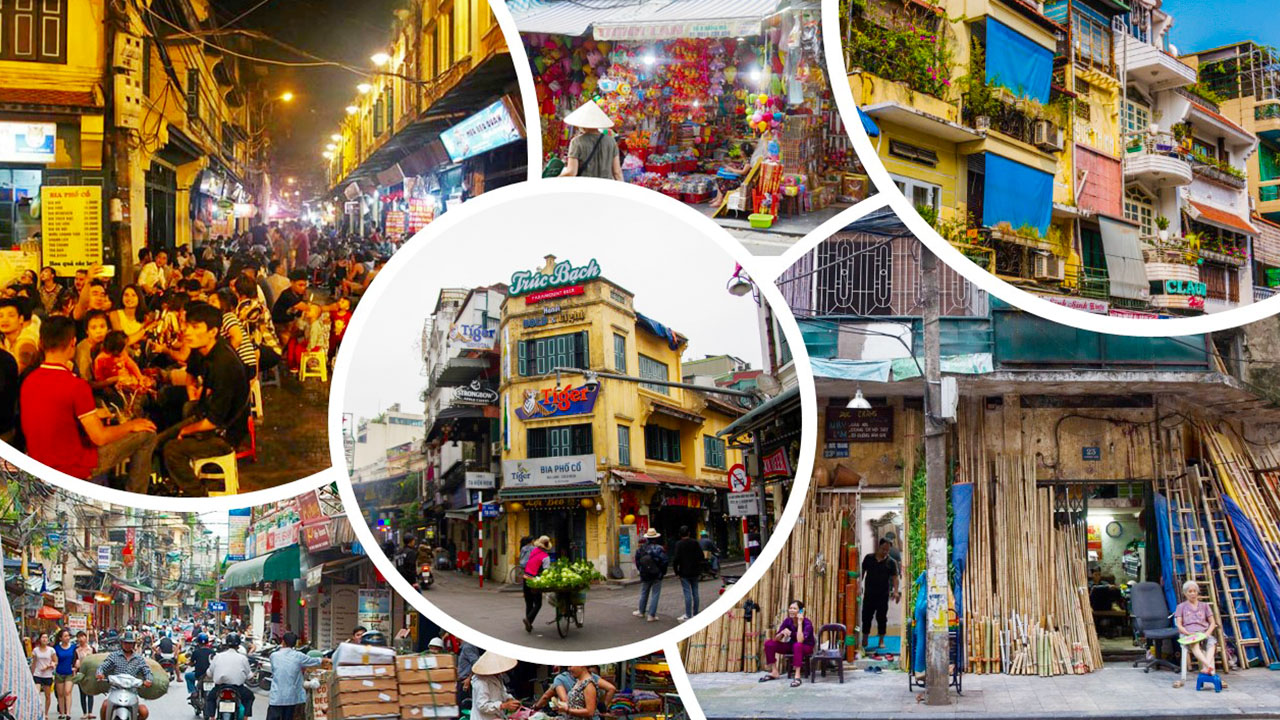
The Origin and Significance of the 36 Streets
The 36 Streets Hanoi have a long and storied history that dates back to the Ly and Tran dynasties. These streets were originally established as trade guilds, with each street specializing in a specific trade or craft. Over the years, they have become an integral part of Hanoi’s cultural and commercial identity.
The names of the streets reflect the goods or services traditionally sold there. For example, Hang Bac Street is known for its silver jewelry, Hang Gai Street for silk and clothing, and Hang Ma Street for festive decorations. Each street has its own unique character and atmosphere, offering visitors a diverse range of sights, sounds, and experiences.
A Glimpse into Hanoi’s Traditions and Daily Life
Walking through the 36 Streets Hanoi, you’ll get a firsthand look at the vibrant daily life of Hanoi. The streets are bustling with activity, as vendors sell their wares and shoppers negotiate for the best deals. You’ll find a wide array of shops, markets, and traditional houses lining the streets, each showcasing the heritage and craftsmanship of the city.
The architecture of the buildings in the 36 Streets is a testament to Hanoi’s history and culture. The narrow frontages and long, deep interiors reflect the traditional Vietnamese tube house design. These houses were built to withstand the test of time, and many have been preserved in their original form, offering visitors a glimpse into the past.
Historical Landmarks and Cultural Sites
While the commercial activities are a major draw, the 36 Streets Hanoi are also home to numerous historical landmarks and cultural sites. Throughout the area, you’ll find temples, pagodas, and communal houses that have been standing for centuries. These sites offer a glimpse into the religious and spiritual traditions of Hanoi and provide a peaceful escape from the hustle and bustle of the streets.
The 36 Streets are also a hub for traditional Vietnamese cuisine. Numerous restaurants and food stalls are scattered throughout the area, offering a wide range of local delicacies and street food. From steaming bowls of pho to crispy banh mi sandwiches, you’ll find something to please every palate.
A Popular Tourist Destination
The 36 Streets of Hanoi have become a must-visit destination for both domestic and international tourists. People from all over the world flock to this area to experience the unique and authentic charm of Hanoi. Whether you’re a history buff, a food lover, or simply a curious traveler, the 36 Streets offer something for everyone.
As you navigate through the narrow alleys and soak up the vibrant atmosphere, you’ll gain a deeper understanding of Hanoi’s history, culture, and daily life. The streets are filled with stories and traditions that have been passed down through generations, and exploring them is like taking a step back in time.
Plan Your Visit to the 36 Streets
If you’re planning a trip to Hanoi, make sure to include a visit to the 36 Streets in your itinerary. To make the most of your experience, here are some tips:
- Research and plan: Before you visit, do some research on the specific streets you want to explore. Each street has its own unique offerings, so plan your visit accordingly.
- Wear comfortable shoes: The 36 Streets can get crowded and navigating the narrow alleys can be challenging. Make sure to wear comfortable shoes to explore the area with ease.
- Try the local cuisine: Don’t miss the opportunity to sample the delicious Vietnamese cuisine available in the 36 Streets. From street food stalls to traditional restaurants, there’s something for every taste bud.
- Respect the local culture: Remember to dress modestly and be mindful of local customs and traditions while exploring the 36 Streets. Respect the local residents and businesses as you immerse yourself in the vibrant atmosphere.
Exploring famous streets of 36 Streets Hanoi
Hang Buom Street: Historical mark of sail makers
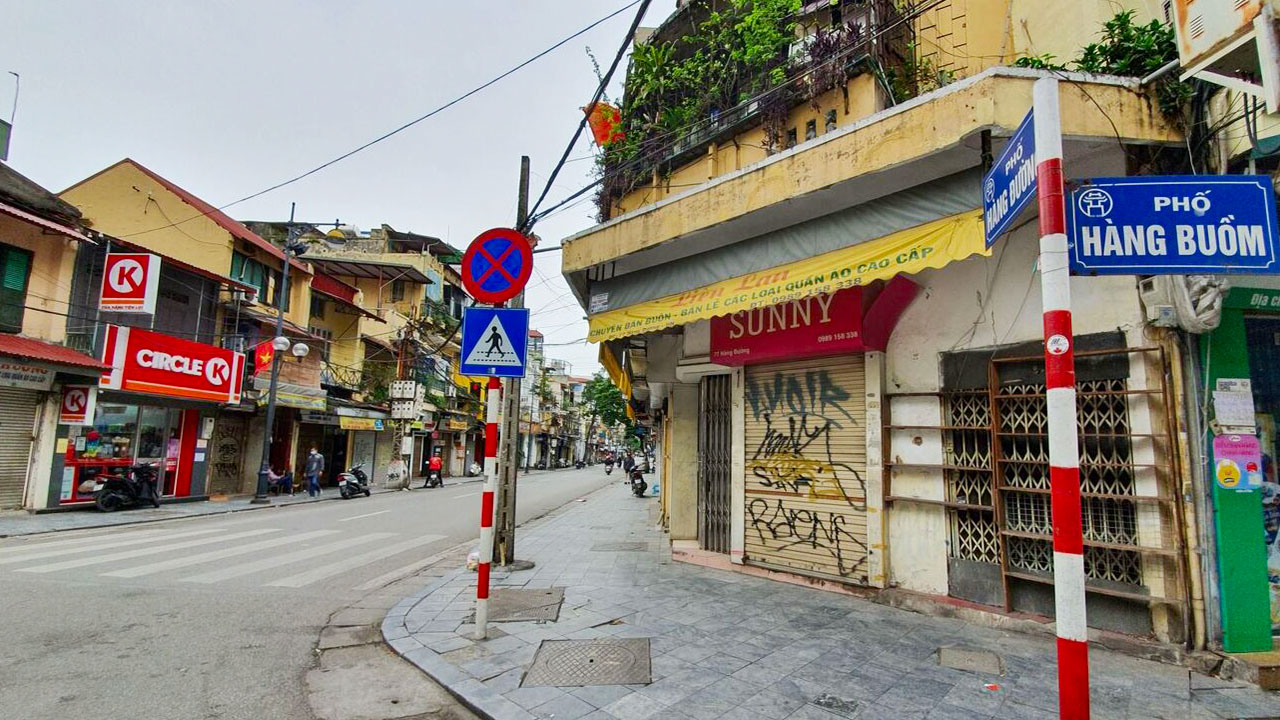
Hang Buom is one of the renowned streets located in the Hanoi Old Quarter, Vietnam. This bustling street is known for its vibrant atmosphere, rich history, and a plethora of retail shops that offer a wide range of products. From traditional handicrafts to modern clothing, Hang Buom has something to offer to every visitor. Let’s take a closer look at this fascinating street and discover its unique charm.
As you walk along Hang Buom, you will be instantly captivated by the lively atmosphere and the colorful facades of the shops lining the street. The name “Hang Buom” in Vietnamese means “sails shop,” which reflects its historical significance. In the past, this street was a hub for sail makers who created sails for the boats that roamed the nearby Red River.
To truly appreciate the charm of Hang Buom, it is essential to delve into its rich history. This street dates back hundreds of years and has witnessed the transformations of Hanoi throughout different dynasties. The traditional architecture of the shop houses showcases the distinct Vietnamese design elements, characterized by narrow facades and tall structures.
Whether you are a shopaholic or simply looking for unique souvenirs, Hang Buom offers an array of shopping delights. From handcrafted lacquerware to elegant silk garments, you will find an impressive selection of traditional Vietnamese products. Additionally, the street is lined with stores selling traditional Vietnamese snacks and beverages, allowing you to indulge in the local culinary delights.
One of the highlights of Hang Buom is the night market, which comes alive after sunset. This vibrant market offers a unique shopping experience, where you can find an assortment of goods, including clothing, accessories, handicrafts, and street food. The bustling atmosphere, lively music, and colorful lights create an unforgettable ambiance that will leave you enthralled.
Hang Ngang Street: Unique shopping experiences

Located adjacent to Hang Buom, Hang Ngang street is another popular street in the Old Quarter of Hanoi. Known for its historical significance and diverse range of shops, Hang Ngang attracts both locals and tourists alike. Let’s dive into the charm of this captivating street.
Hang Ngang holds a significant place in Vietnamese history. This street was once the central hub for trading and commerce, attracting merchants from near and far. Over the centuries, Hang Ngang has retained its historical charm, with many of its shop houses maintaining their traditional architecture.
With its wide variety of shops, Hang Ngang offers a unique shopping experience to visitors. From boutique clothing stores to art galleries showcasing local talent, you will find an assortment of products to suit your taste. The street is also famous for its traditional Vietnamese ao dai, a long, elegant dress that is a symbol of Vietnamese culture.
Hang Ngang is not only a shopper’s paradise but also a cultural hub. The street is home to several historical and cultural attractions, such as the Temple of the Jade Mountain. This temple is dedicated to Confucius and provides a serene escape from the bustling streets of Hanoi. The architecture and intricate details of the temple are truly mesmerizing.
Hang Ma Street: Street of colorful colors
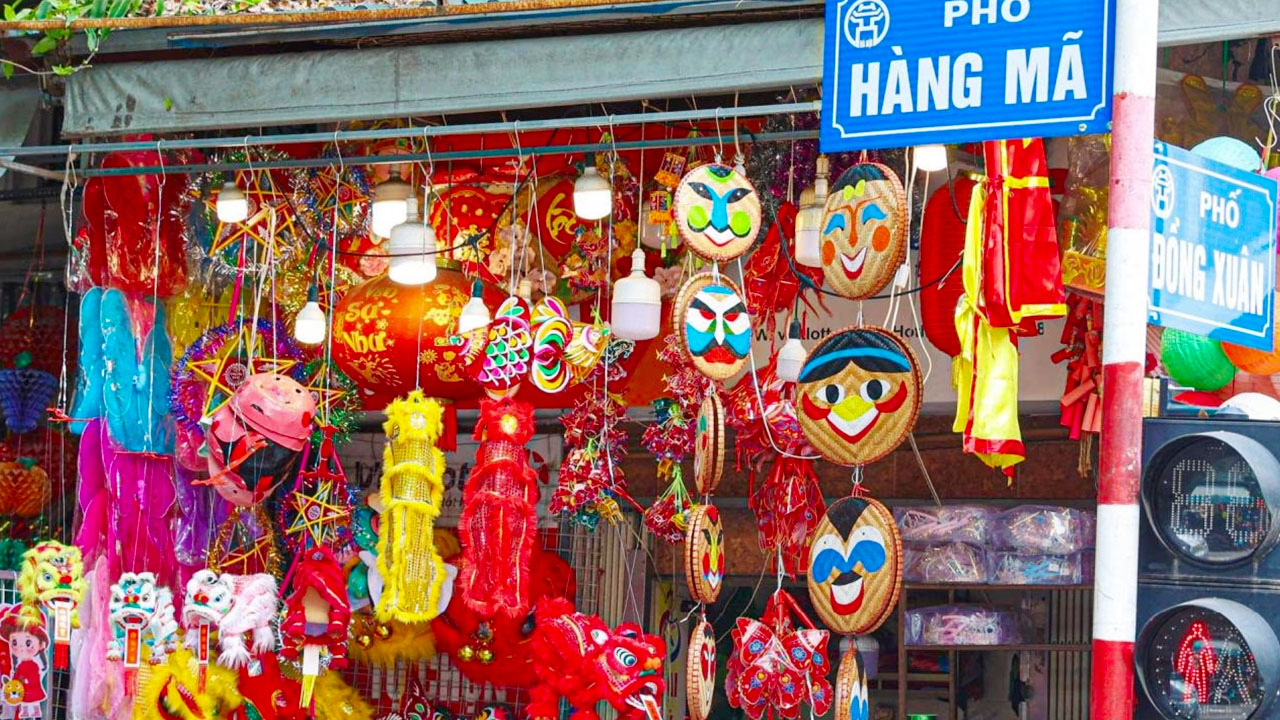
Hang Ma street is a bustling street located in the heart of Hanoi’s Old Quarter. Known for its vibrant atmosphere and the celebration of traditional festivals, Hang Ma is a must-visit destination for anyone seeking an authentic cultural experience. Let’s delve into the charm of this captivating street.
One of the main draws of Hang Ma is its association with traditional festivals, particularly Tet, the Vietnamese Lunar New Year. During this time, the street comes alive with vibrant decorations, including colorful paper ornaments, lanterns, and traditional masks. The festive atmosphere is contagious, and locals and tourists alike flock to Hang Ma to soak in the celebratory ambiance.
Hang Ma is renowned for its specialty stores that cater to the festive needs of the locals. From paper offerings for ancestral worship to traditional costumes and accessories, you will find everything you need to celebrate Tet in grand style. The street is also known for its wide selection of fireworks, as the Vietnamese believe in lighting up the sky to ward off evil spirits during the New Year.
Apart from the festive items, Hang Ma is also an excellent place to find unique souvenirs. You will come across shops selling traditional Vietnamese handicrafts, lacquerware, and hand-painted artwork. These make for perfect gifts to take back home or to treasure as a memory of your visit to Hanoi.
Hang Mam Street: Diverse local cuisine
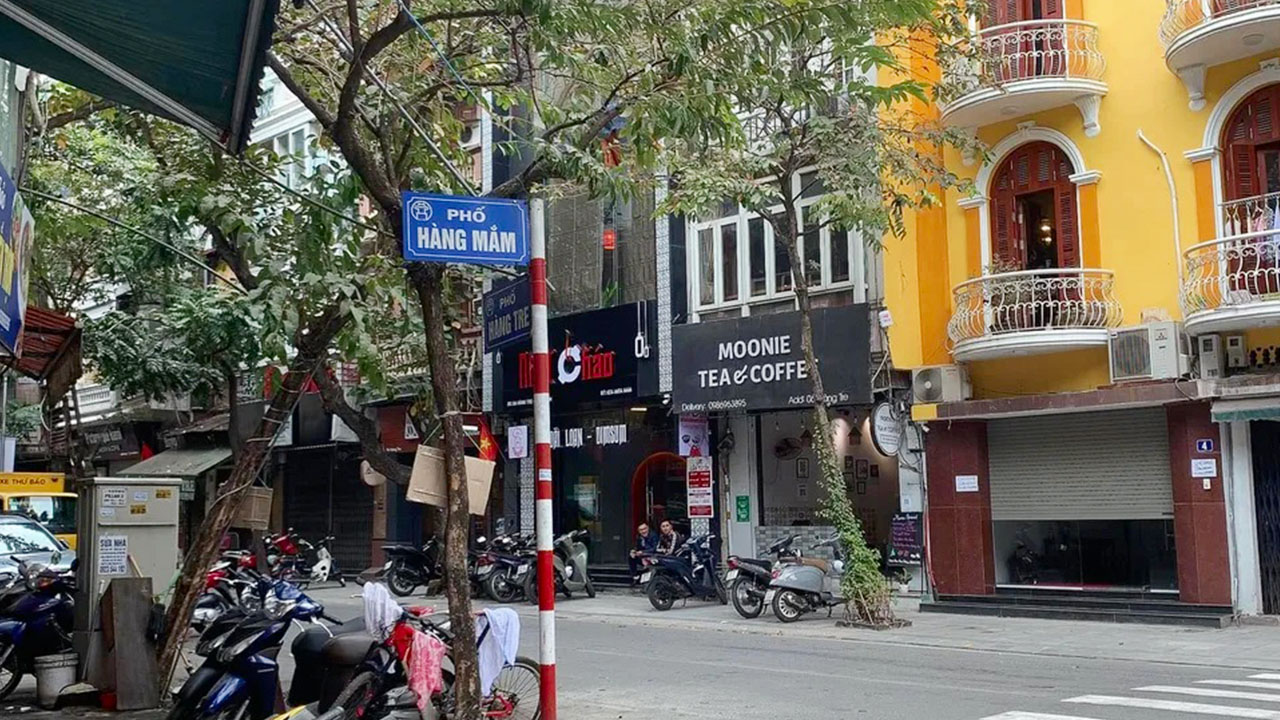
Hang Mam, located in the heart of the Old Quarter, is a street that offers an intriguing blend of mouthwatering cuisine, cultural attractions, and a vibrant atmosphere. Let’s unravel the secrets of this captivating street and discover why it is a must-visit destination for food enthusiasts and culture aficionados.
One of the main highlights of Hang Mam is its culinary scene. The street is famous for its diverse range of traditional Vietnamese dishes, with a focus on fermented seafood, which gives the street its name (“mam” means fermented seafood in Vietnamese). From the pungent yet flavorful fish sauce to the delectable fermented shrimp paste, Hang Mam is a paradise for foodies looking to explore the unique flavors of Vietnam.
As you stroll along Hang Mam, you will find numerous local eateries where you can sample these traditional dishes. From street vendors selling steaming bowls of pho to family-run restaurants serving up mouthwatering specialties, every corner of this street offers a tantalizing culinary adventure. Be sure to try the local delicacies, such as bun mam (fermented fish soup) and cha ca (grilled fish with turmeric and dill), for a truly authentic food experience.
Hang Trong Street: Famous for Vietnamese folk paintings
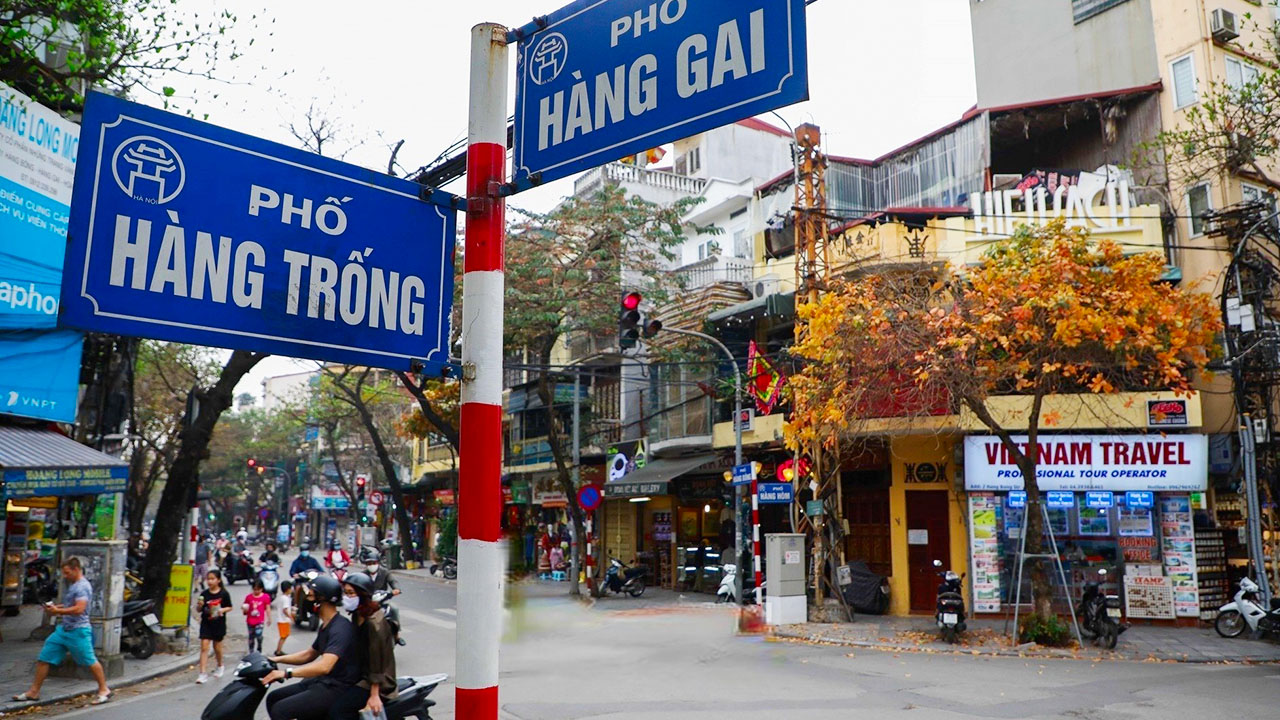
Hang Trong, located in the heart of Hanoi’s Old Quarter, is a street steeped in history and renowned for its traditional craft techniques. From delicate embroidery to intricate wood carving, Hang Trong is a paradise for art enthusiasts and history buffs. Let’s explore the charm of this captivating street and discover its unique offerings.
Hang Trong is known for its traditional craft techniques that have been passed down through generations. The street is dotted with shops selling handcrafted items such as silk paintings, lacquerware, and woodblock prints. These items showcase the exquisite craftsmanship and attention to detail that make Hang Trong a go-to destination for art connoisseurs.
The artisans along Hang Trong are dedicated to preserving Vietnam’s cultural heritage. They take pride in their craft and are passionate about passing on their knowledge to future generations. Visitors to Hang Trong can witness these artisans at work, showcasing their skills and keeping the traditional crafts alive.
Hang Trong is also home to several art galleries and museums that exhibit the works of local artists. These spaces provide a platform for emerging talent and showcase a range of artistic expressions, from contemporary paintings to intricate sculptures. Art enthusiasts will find themselves immersed in the vibrant art scene that Hang Trong has to offer.
Hang Be Street: Famous and vibrant local markets
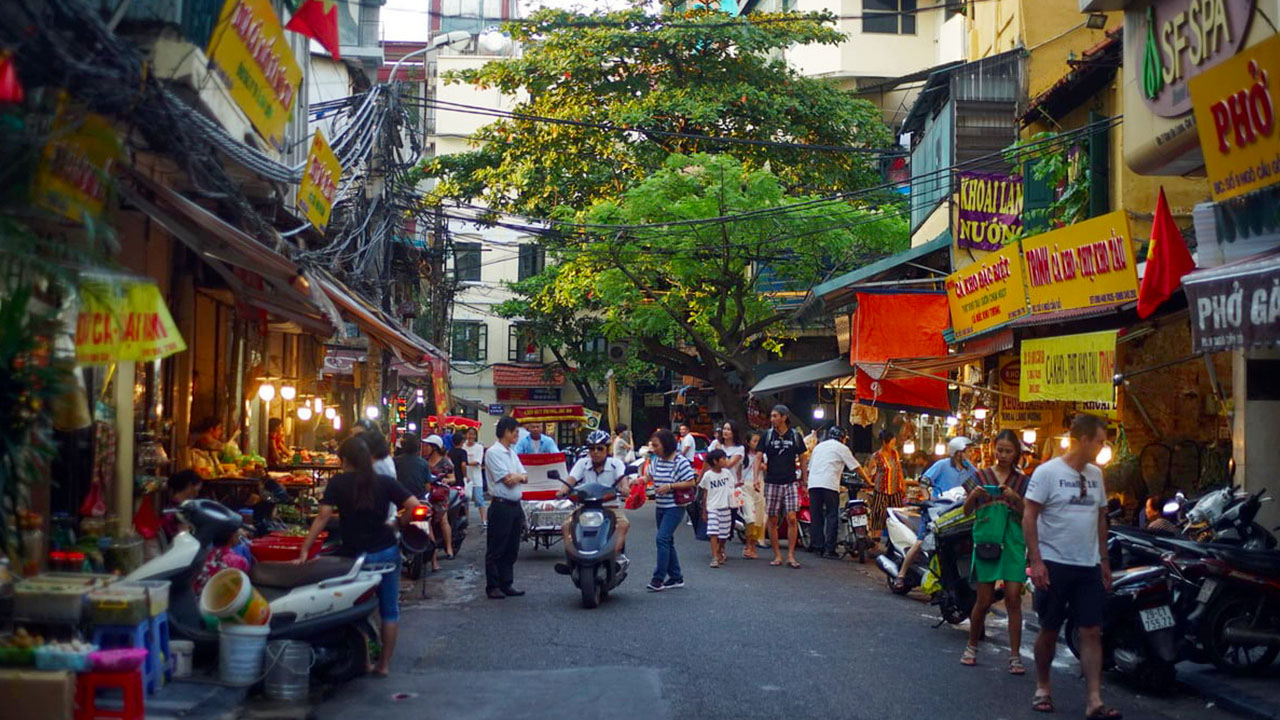
Hang Be, nestled in the heart of Hanoi’s Old Quarter, is a charming street that offers a glimpse into the everyday lives of the locals. From bustling markets to delectable street food, Hang Be is a must-visit destination for anyone seeking an authentic Vietnamese experience. Let’s dive into the charm of this captivating street and discover why it should be on your itinerary.
Hang Be is famous for its lively markets that showcase the vibrant local culture. The street hosts a sprawling wet market, where locals come to buy fresh produce, meat, and seafood. Exploring this market is an excellent way to experience the sights, sounds, and smells of everyday life in Hanoi.
As you explore Hang Be, you will encounter a plethora of street food stalls that offer a wide variety of mouthwatering dishes. From banh mi (Vietnamese sandwiches) to bun cha Hanoi (grilled pork noodles), the street is a paradise for food lovers. Be sure to try the local specialties, such as pho ga (chicken noodle soup) and banh cuon (steamed rice rolls), for an authentic taste of Hanoi.
Hang Be is also home to artisan shops that sell traditional Vietnamese crafts and souvenirs. From handmade jewelry to intricately embroidered fabrics, you will find unique pieces that reflect the talent and creativity of the local artisans. Supporting these small businesses not only allows you to take home a piece of Vietnamese culture but also contributes to the preservation of traditional crafts.
Hang Gai Street: The Silk and Clothing Haven

Hang Gai Street, one of the most famous streets in the “36 Streets,” is a haven for silk and clothing enthusiasts. Visitors can find an array of high-quality silk products, including intricately-designed ao dai (traditional Vietnamese dresses), tailored suits, and scarves. The street is also home to numerous boutiques and shops where you can witness the craftsmanship that goes into creating these beautiful garments.
Hang Bac Street: A Haven for Silver Jewelry
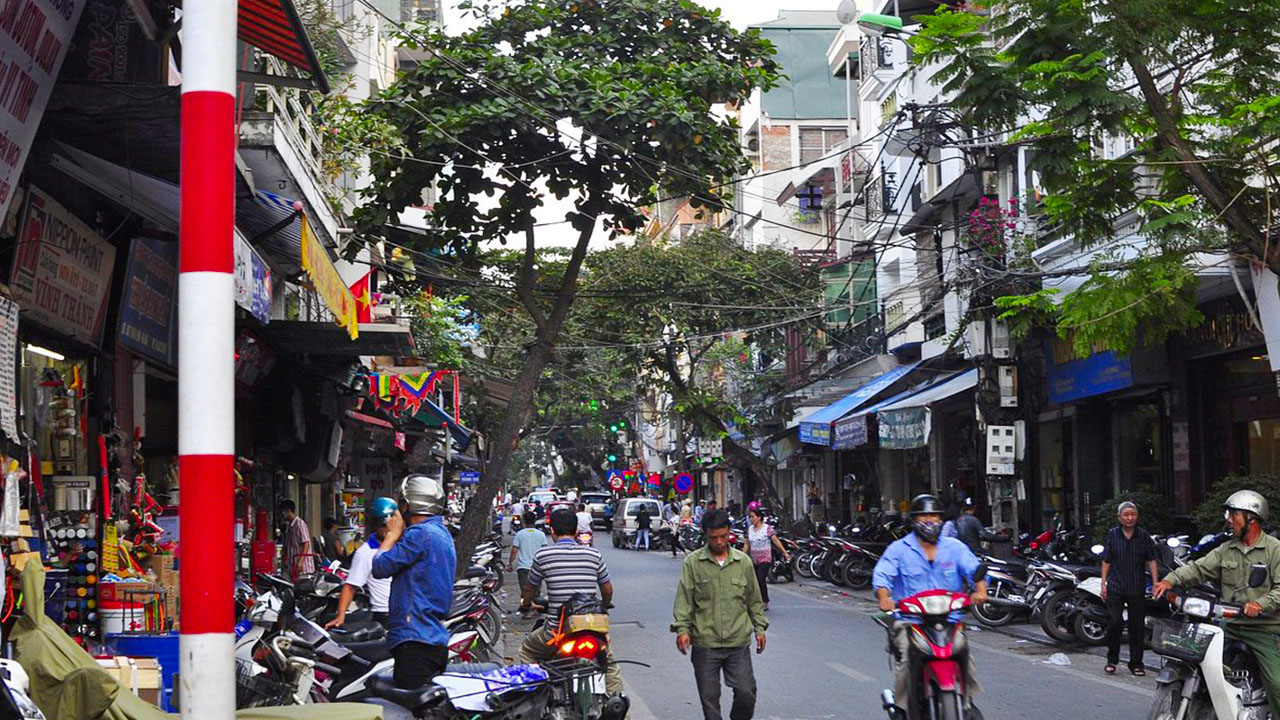
If you have a penchant for silver jewelry, look no further than Hang Bac Street. With a history dating back centuries, this street is renowned for its skilled silversmiths and exquisite craftsmanship. Visitors can explore a wide variety of silver jewelry designs, ranging from earrings and bracelets to ornate traditional pieces. Whether you’re a jewelry enthusiast or simply appreciate the beauty of finely-crafted accessories, Hang Bac Street is a treasure trove of stunning silverware.
Discovering the Cultural and Historical Sites
Hanoi’s Old Quarter is a culturally significant area located in the heart of the city. With its 36 streets, this historic neighborhood has been home to artisans since the 15th century. We will take you on a journey through the 36 Streets of Hanoi’s Old Quarter, highlighting must-visit attractions that showcase the rich history and vibrant culture of this enchanting area.
Hoan Kiem Lake

One of the key landmarks in the Old Quarter is Hoan Kiem Lake. This picturesque lake holds great historical and cultural significance for the people of Hanoi. Legend has it that a mythical golden turtle reclaimed a magical sword from Emperor Le Loi in this very lake, thus marking the end of his fight against Chinese invaders. Today, locals and tourists alike flock to Hoan Kiem Lake to take in its beauty and tranquility. You can stroll along the lakeside promenade, visit Ngoc Son Temple situated on a small island in the lake, or simply sit back and enjoy the peaceful atmosphere.
Hanoi Opera House
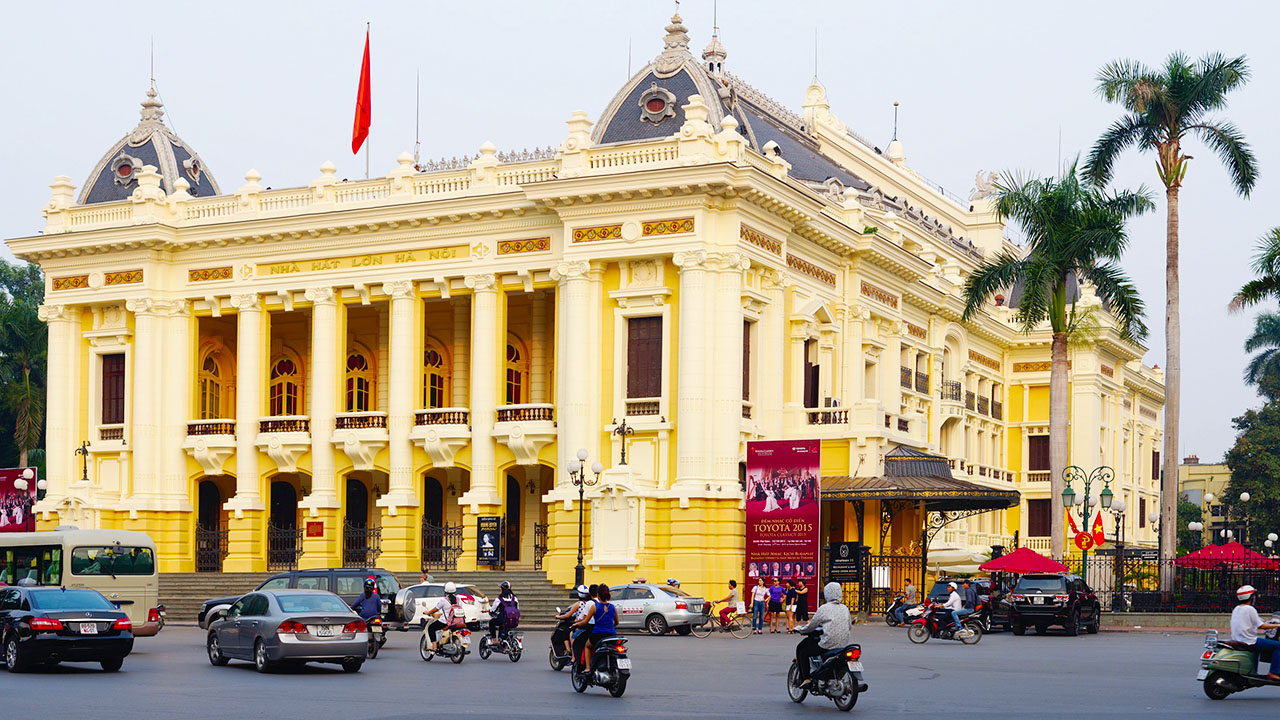
Another prominent attraction in the Old Quarter is the Hanoi Opera House. This architectural gem is reminiscent of the grand opera houses found in Europe. Built in 1911, it showcases neoclassical French design and hosts various performances, including ballets, operas, and classical music concerts. Even if you’re not able to catch a show, taking a leisurely walk around the Opera House is a delightful experience. The building’s exterior is adorned with intricate details, making it a perfect spot for photography enthusiasts.
Dong Xuan Market
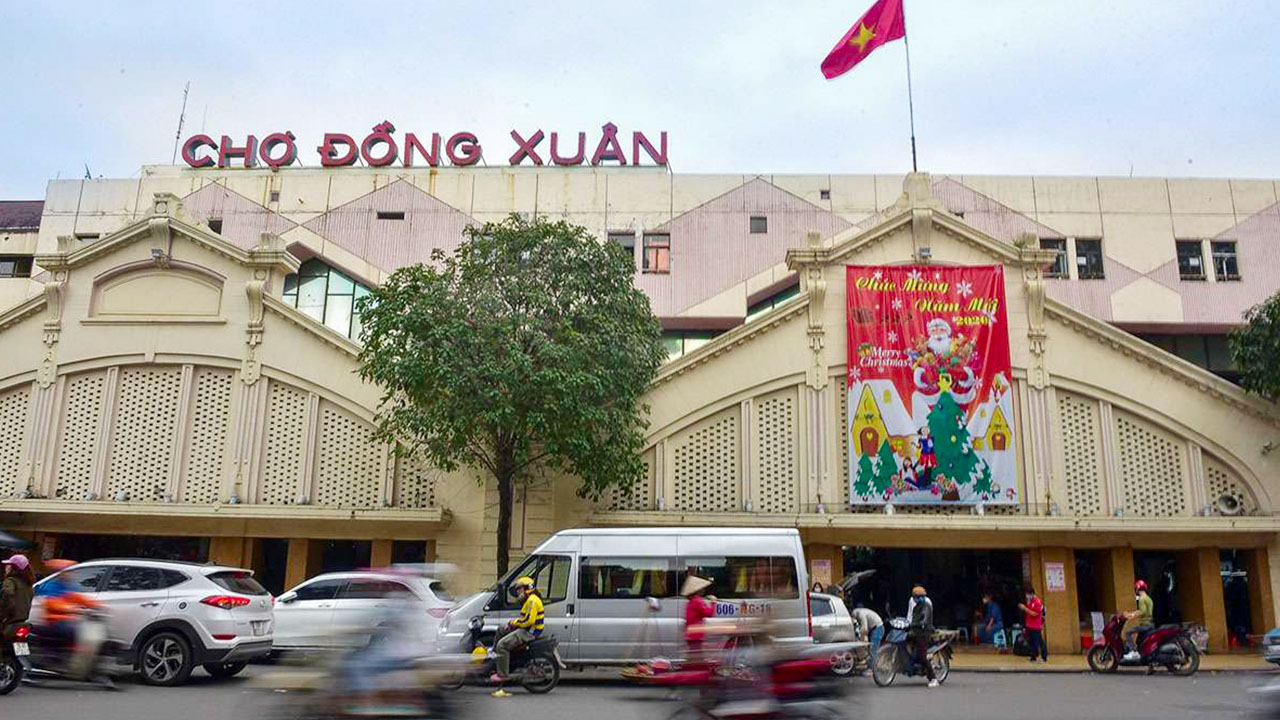
No visit to the Old Quarter would be complete without exploring Dong Xuan Market. Located on Hang Dao Street, this bustling market is one of the largest and oldest in Hanoi. It offers a fascinating glimpse into Vietnamese daily life and is a treasure trove for shopaholics. Here, you can find an array of goods, including clothing, accessories, household items, and fresh produce. Don’t forget to bargain with the friendly vendors to secure the best deals. Dong Xuan Market is not only a shopping destination but also a cultural experience that immerses you in the vibrant energy of Hanoi.
Temple of Literature
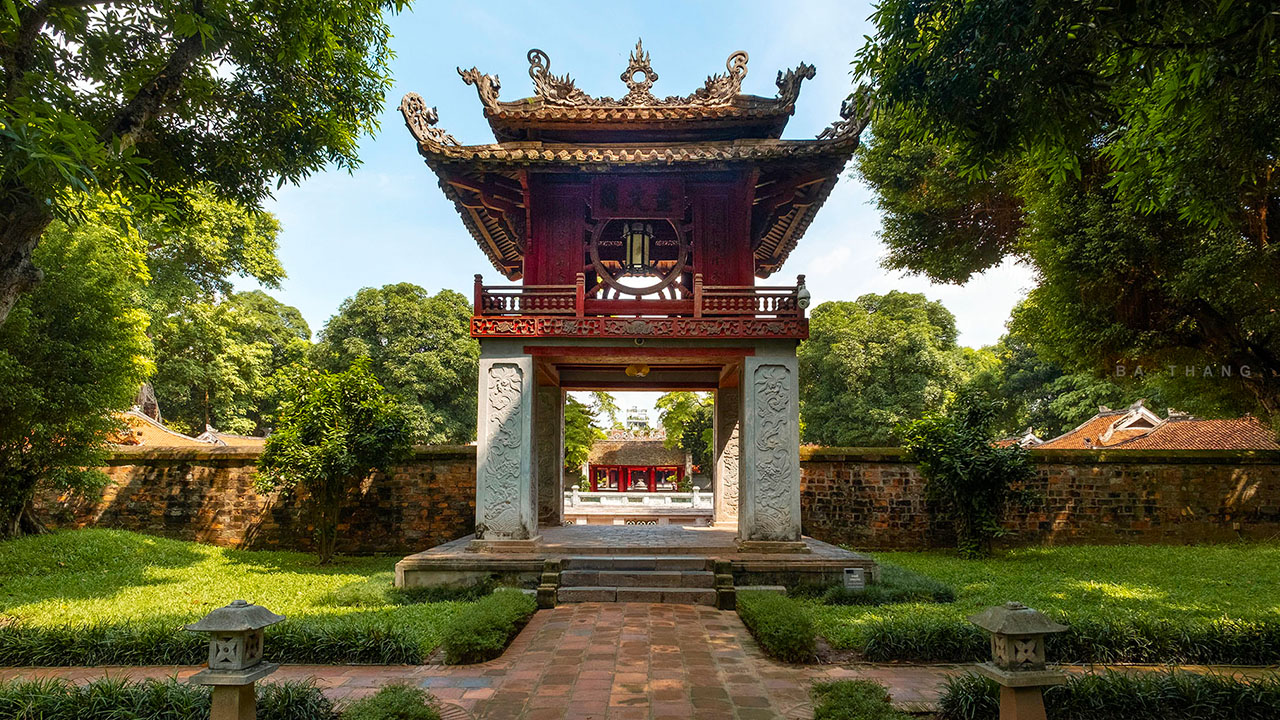
Just a short distance from the Old Quarter lies the Temple of Literature, one of Vietnam’s most important historical sites. Built in 1070 during the Ly dynasty, this temple was dedicated to Confucius and served as Vietnam’s first national university. It played a crucial role in educating scholars and mandarins for several centuries. The Temple of Literature is renowned for its stunning architecture, serene gardens, and rich cultural heritage. Take your time to explore its courtyards, admire the beautiful pavilions and altars, and learn about the nation’s academic history.
St. Joseph’s Cathedral Hanoi
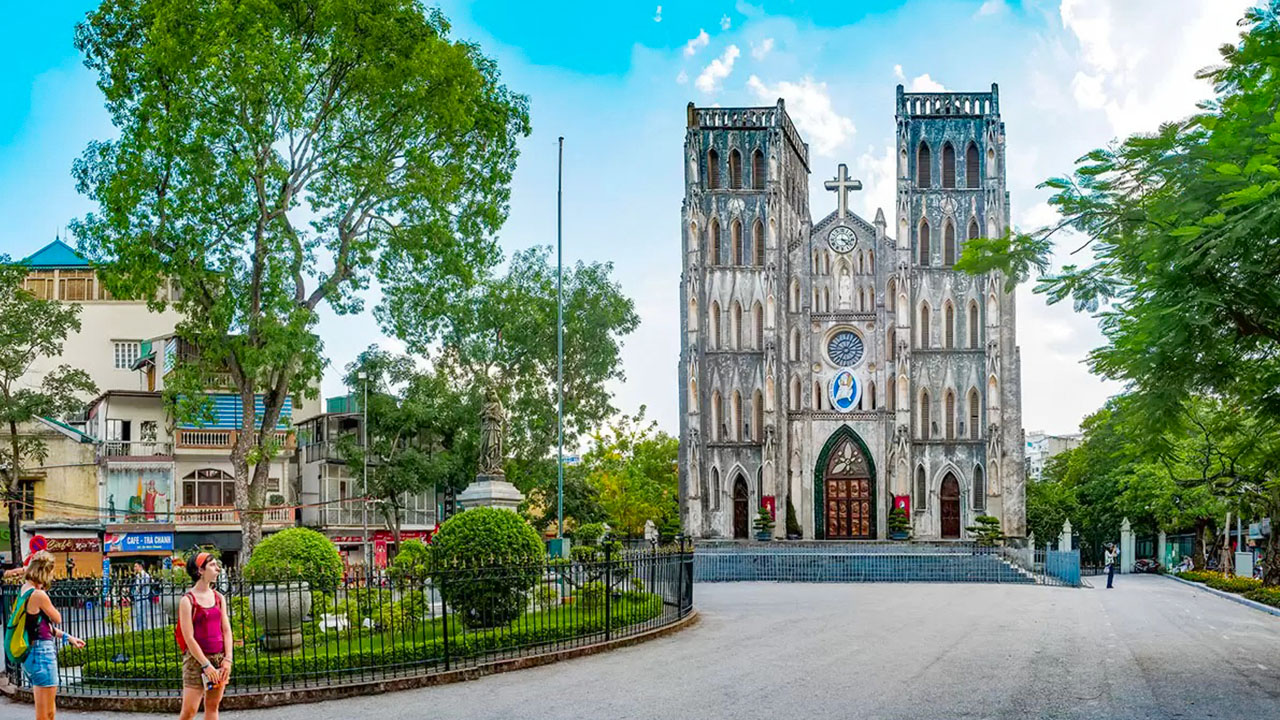
A visit to the Old Quarter wouldn’t be complete without stopping by St. Joseph’s Cathedral, a striking example of French Gothic architecture. Built between 1884 and 1886, this Catholic cathedral stands out amidst the traditional Vietnamese buildings surrounding it. Step inside to marvel at its beautiful stained glass windows, towering arches, and intricate decorations. St. Joseph’s Cathedral remains an important place of worship for Hanoi’s Catholic community and is also a popular spot for visitors seeking solace and contemplation.
Night Market on Hang Ngang – Hang Dao Streets
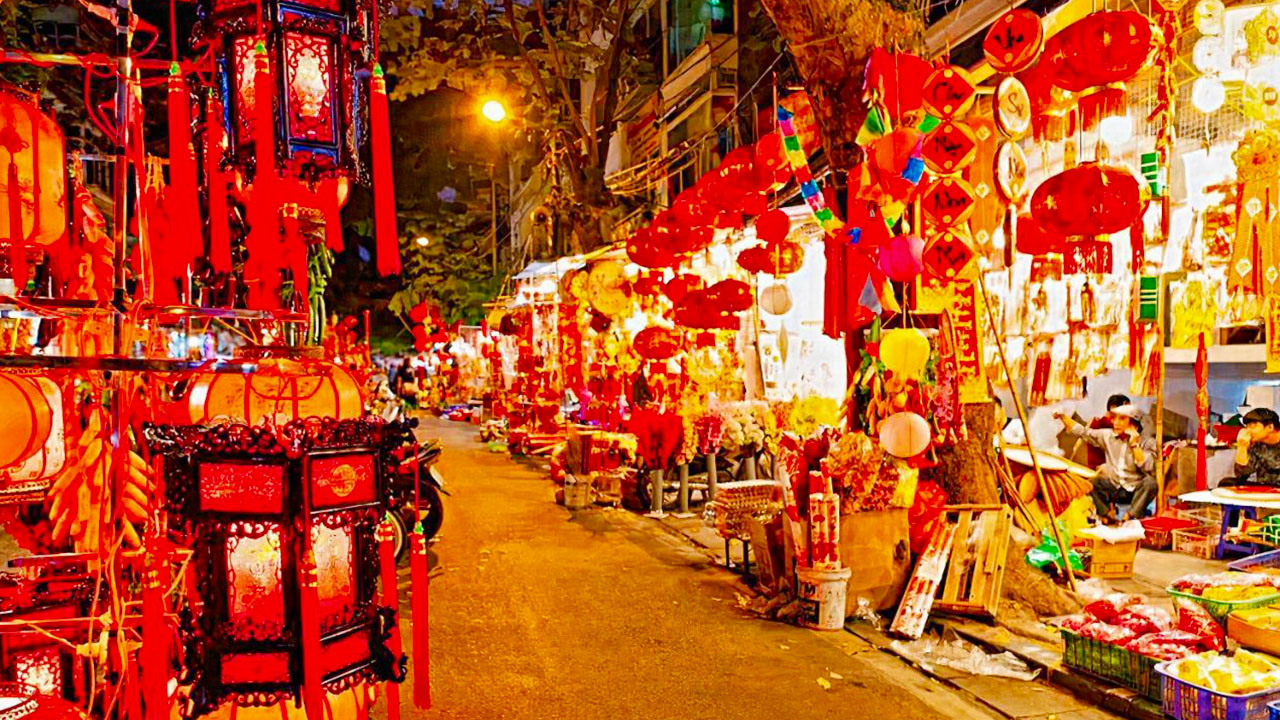
When the sun sets over Hanoi, the vibrant night market comes alive on Hang Ngang and Hang Dao Streets in the Old Quarter. These two streets are transformed into a bustling hub of activity every Friday, Saturday, and Sunday evening. As you navigate through the sea of shops and stalls, you’ll find yourself immersed in a sensory wonderland. From street food vendors offering mouthwatering delicacies to local artisans selling handicrafts and souvenirs, there’s something for everyone at this lively night market. Grab a bite to eat, shop for unique gifts, and soak up the energetic atmosphere.
Bach Ma Temple: The Oldest Temple in Hanoi
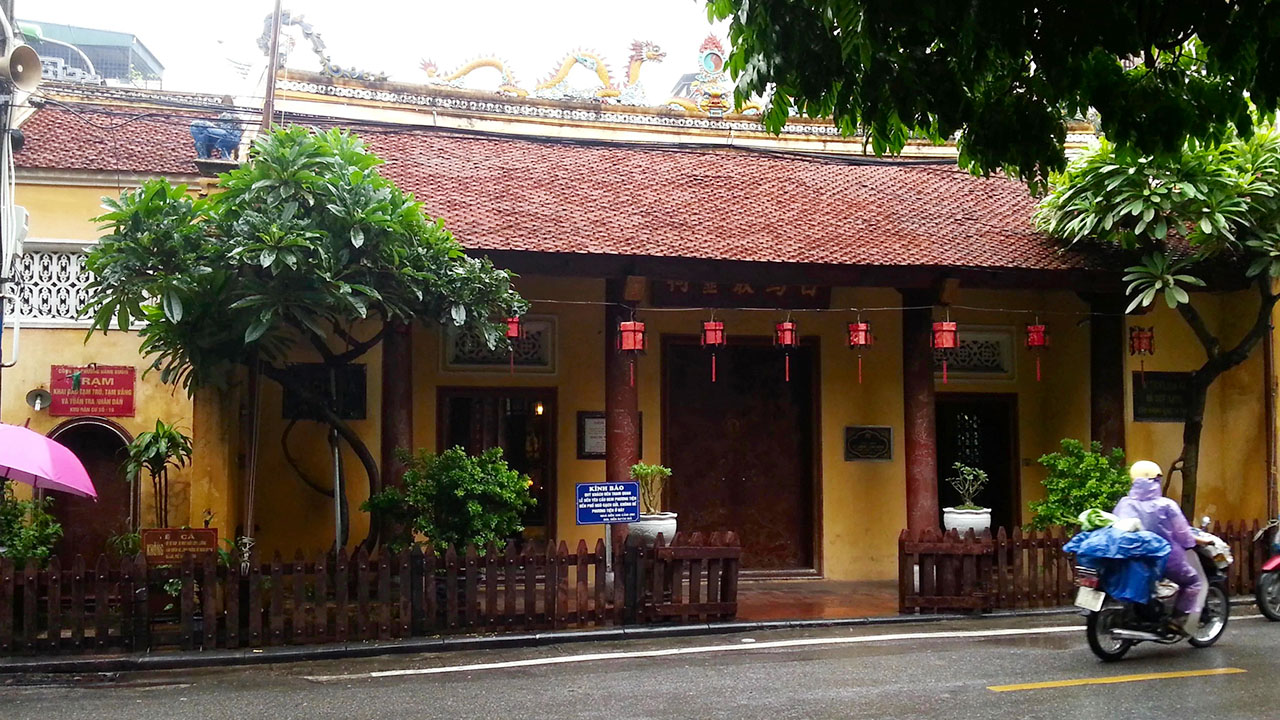
Bach Ma Temple, located in Hang Buom Street, is a place of great historical significance. Built in the 11th century, it is known as the oldest temple in Hanoi. Dedicated to a white horse that is believed to have guided the founding emperor of the Ly Dynasty to this location, the temple offers a serene and tranquil retreat from the bustling streets. Visitors can pay their respects to the deity and admire the architecture and intricate carvings that adorn the temple.
Exploring the Vibrant Street Food Culture in 36 streets Hanoi
Hanoi’s Old Quarter is a bustling neighborhood known for its vibrant street food culture. The narrow streets are lined with food stalls and vendors, offering a wide array of delicious and authentic Vietnamese dishes. In the journey to learn 36 streets Hanoi, we can not ignore the topic of street food. From traditional favorites to lesser-known delicacies, get ready to tantalize your taste buds with the flavors of Vietnam.
Banh Cuon (Steamed Rice Paper Rolls)

One of the must-try dishes in Hanoi’s Old Quarter is Banh Cuon, a delicate and flavorful Vietnamese specialty. These steamed rice paper rolls are made by spreading a thin layer of rice batter on a cloth stretched over a pot of boiling water. The filling typically consists of minced pork, mushrooms, and shallots, giving it a savory taste. Banh Cuon is often served with a side of fish sauce and topped with fried shallots and fresh herbs.
Bun Oc (Snail Noodle Soup)
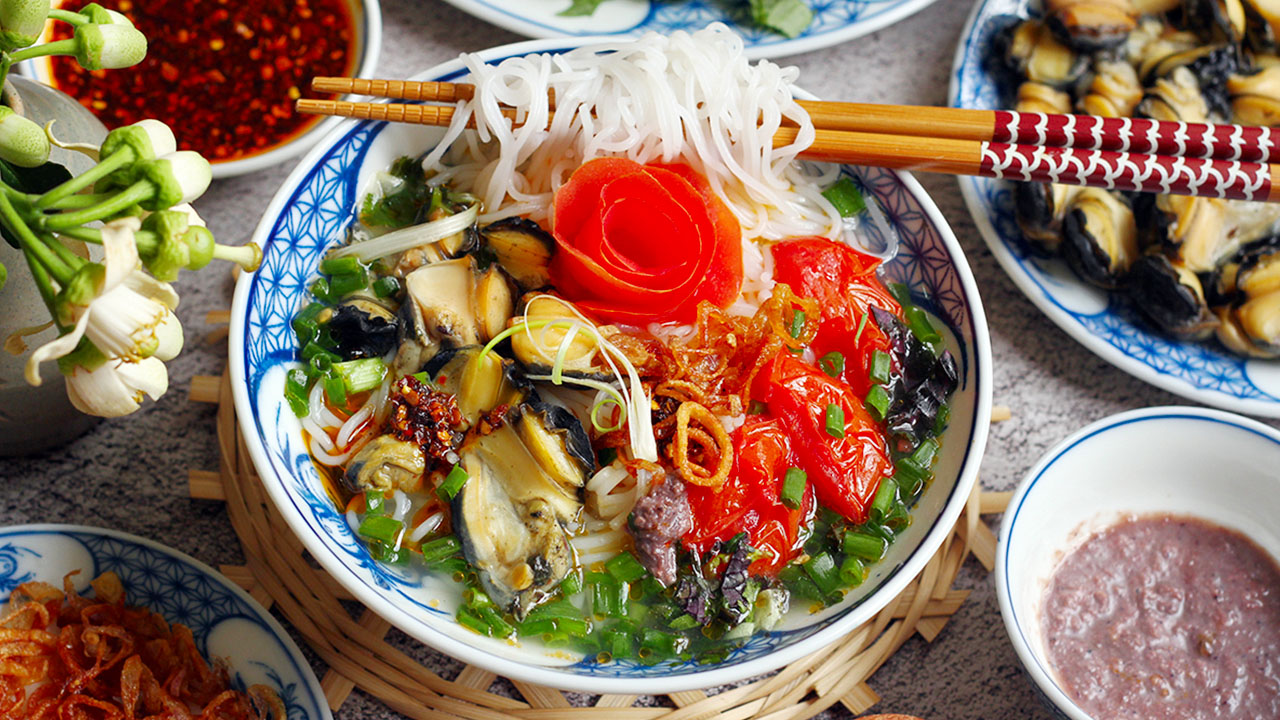
For those looking to explore more adventurous flavors, Bun Oc is a dish you shouldn’t miss. This flavorful noodle soup features rice vermicelli, snails, tomatoes, and herbs, all cooked in a rich and fragrant broth. The snails add a unique texture to the dish and are often accompanied by crispy fried tofu or pork.
Lau (Vietnamese Hot-pot)
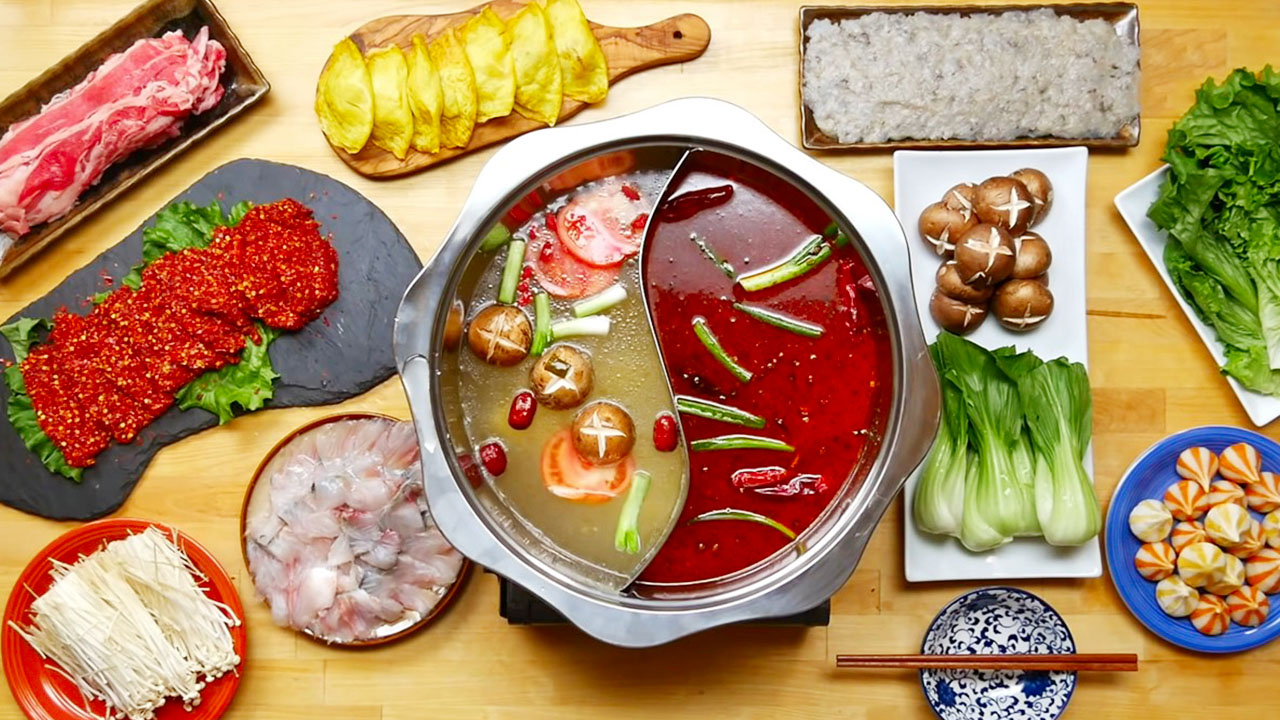
Lau, also known as Vietnamese hot-pot, is a communal dish that is perfect for sharing with friends or family. The hot-pot consists of a simmering broth flavored with various herbs and spices. You can choose from a variety of ingredients such as thinly sliced beef, pork, seafood, tofu, and an assortment of vegetables. The ingredients are cooked at the table, allowing you to customize the flavors to your liking.
Hanoi-style Barbecue
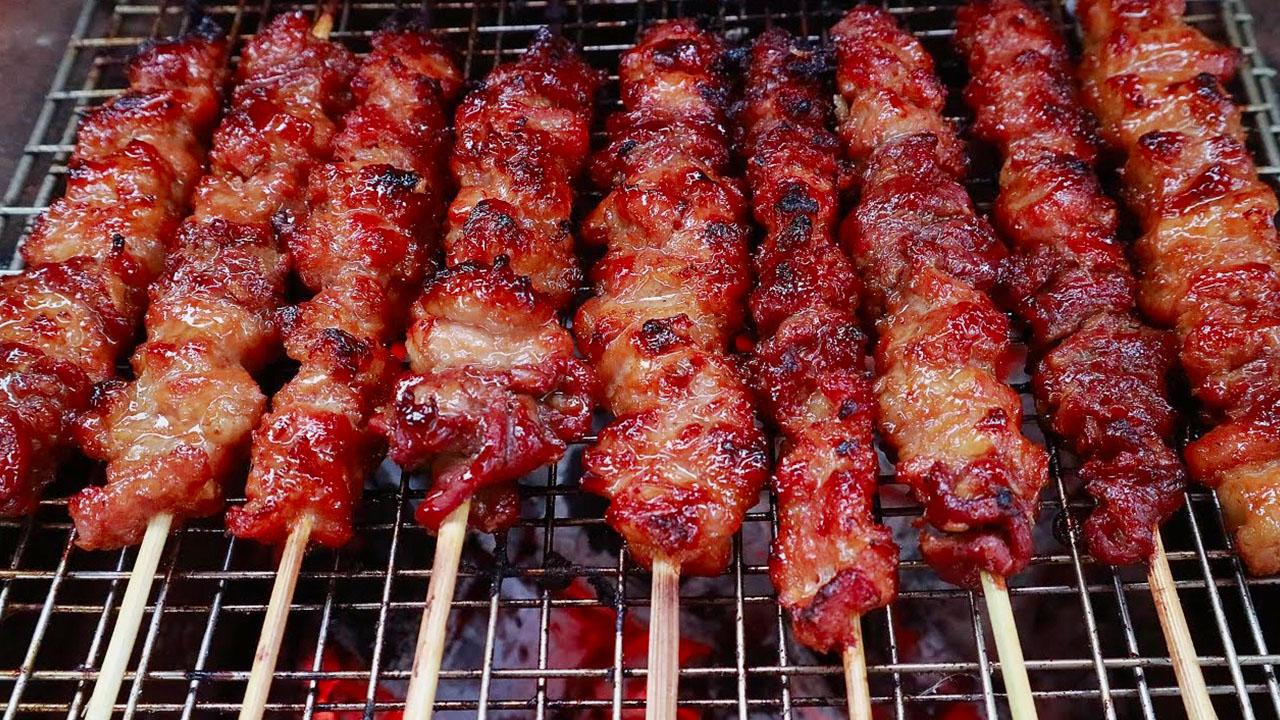
Hanoi-style barbecue is a popular street food option that offers a unique dining experience. You’ll find small charcoal grills set up on the sidewalks, where you can grill your own meat skewers. The marinated meat options include pork, beef, chicken, and seafood. Once cooked to perfection, you can wrap the grilled meat in rice paper with fresh herbs and vegetables, creating a flavorful and satisfying meal.
Bun Ca (Noodle Soup with Fish)

Bun Ca is a delicious noodle soup that showcases the flavors of freshly caught fish. The soup base is made from fish bones and seasoned with fragrant herbs and spices. The dish is then served with rice vermicelli noodles, fried fish cakes, and topped with fresh herbs and vegetables. The combination of flavors creates a light yet flavorful dish that is perfect for a quick lunch.
Banh Xeo and Nem Lui (Crispy Pancakes and Lemongrass Pork Skewers)
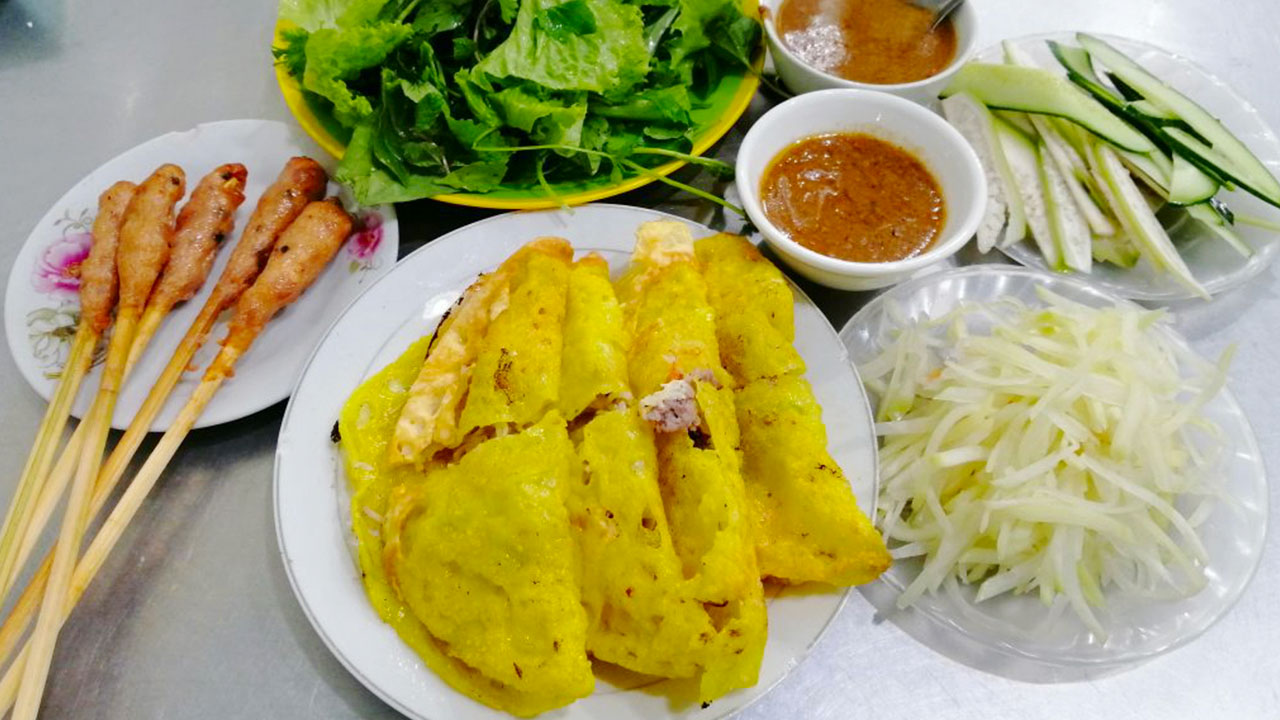
Banh Xeo and Nem Lui are two iconic dishes that are often found together at street food stalls in Hanoi’s Old Quarter. Banh Xeo is a crispy pancake made from rice flour and turmeric powder, filled with bean sprouts, shrimp, and pork. It is typically enjoyed by wrapping it in lettuce leaves and dipping it in fish sauce.
Nem Lui, on the other hand, consists of lemongrass-marinated pork skewers that are grilled to perfection. The meat is then wrapped in rice paper along with fresh herbs and vegetables, creating a flavorful and satisfying bite.
Mien Xao Luon
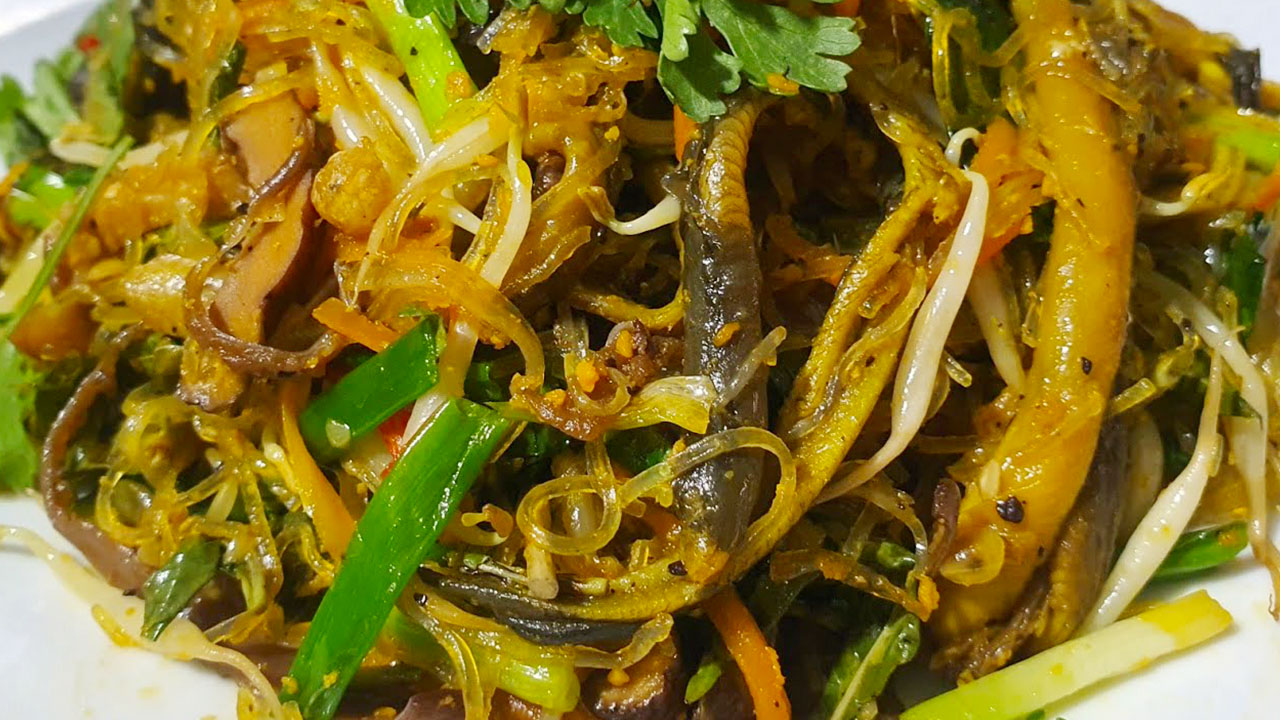
Mien Xao Luon is a unique street food dish that showcases the combination of glass noodles and eel. The glass noodles are stir-fried with vegetables, mushrooms, and eel, creating a hearty and flavorful dish. The eel adds a rich umami flavor to the noodles, making it a favorite among locals and visitors alike.
Banh Da Tron

Banh Da Tron is a popular street food snack that consists of crispy rice crackers mixed with various toppings. The toppings typically include shredded green mango, dried beef floss, peanuts, herbs, and a tangy dressing made from fish sauce and lime juice. This dish offers a delightful combination of textures and flavors – crunchy, savory, tangy, and refreshing.
Pho
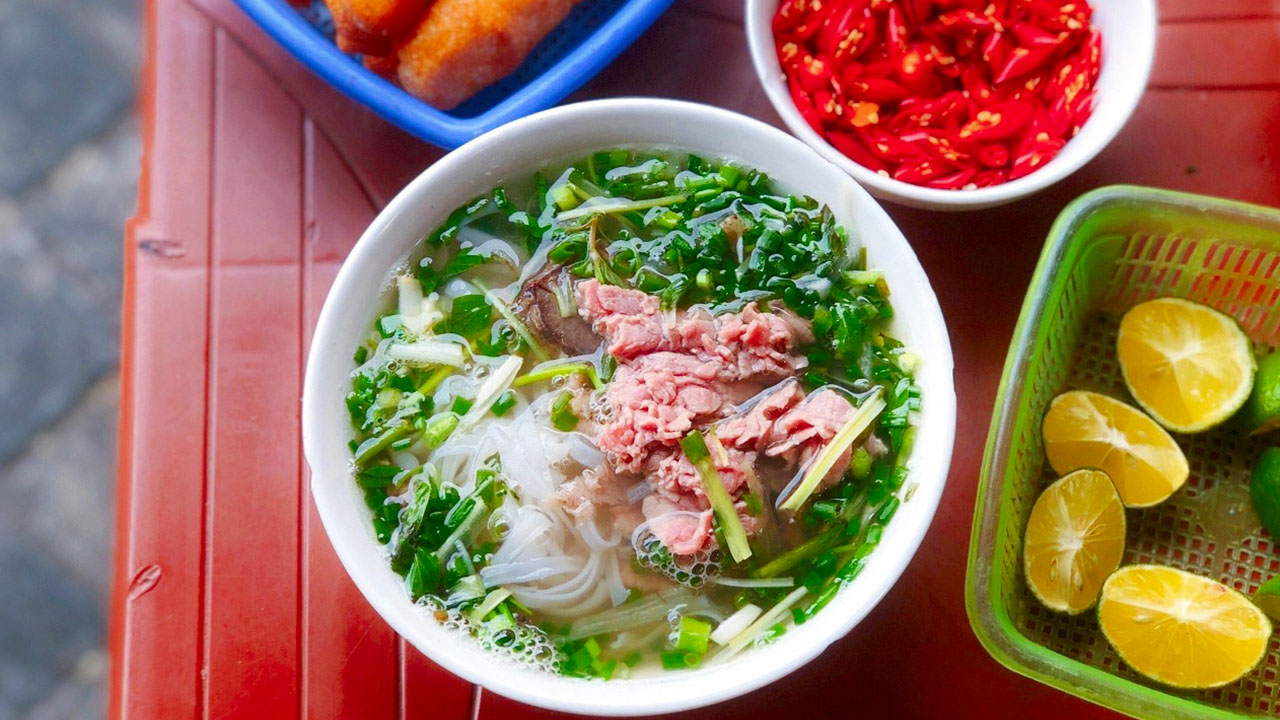
No visit to Hanoi would be complete without trying Pho, Vietnam’s most famous dish. Pho Hanoi is a hearty noodle soup that features tender slices of beef or chicken, rice noodles, and an aromatic broth infused with star anise, cinnamon, ginger, and other spices. It is traditionally served with fresh herbs, bean sprouts, lime wedges, and chili sauce on the side.
Banh Mi

Originating from French influence in Vietnam, Banh Mi Hanoi has become an iconic street food item loved by locals and tourists alike. This Vietnamese sandwich is made with a crusty baguette filled with various fillings such as grilled pork, pate, pickled vegetables, cilantro, and chili sauce. The combination of flavors creates a perfect balance between sweet, savory, tangy, and spicy.
Frequently Asked Questions
Q: How do I get to the 36 Streets in Hanoi?
From Hanoi’s city center, the 36 Streets are within walking distance. You can also take a taxi or ride a motorbike to reach the area.
Q: Are the 36 Streets crowded?
Yes, the 36 Streets can get crowded, especially during peak tourist seasons. It’s best to visit early in the morning or later in the evening to avoid the crowds.
Q: Can I find souvenirs in the 36 Streets?
Yes, the 36 Streets are a great place to shop for unique souvenirs. Each street specializes in different products, from handmade crafts to traditional clothing.
Q: Are there any guided tours available?
Yes, there are guided tours available that can provide you with a deeper understanding of the history and culture of the 36 Streets. Check with local tour operators for more information.
Q: Are there any accommodations near the 36 Streets?
Yes, there are several hotels and guesthouses located near the 36 Streets, making it convenient for visitors to explore the area at their own pace.
Q: Can I visit the 36 Streets at night?
Yes, the 36 Streets come alive at night with vibrant lights and bustling night markets. It’s a different experience compared to visiting during the day.
In Conclusion
A visit to the 36 Streets Hanoi is a journey through history, culture, and tradition. This vibrant area offers a unique glimpse into the daily life of the city and showcases the rich heritage of Hanoi. From shopping for traditional crafts to savoring the flavors of Vietnamese cuisine, the 36 Streets have something to offer every traveler. So, don’t miss the chance to explore this captivating part of Hanoi and create lasting memories of your visit.


